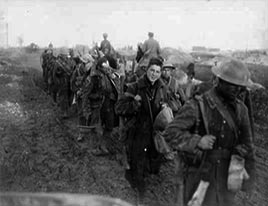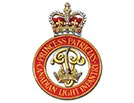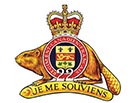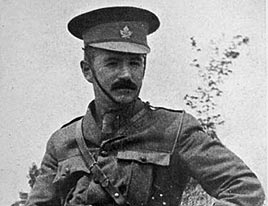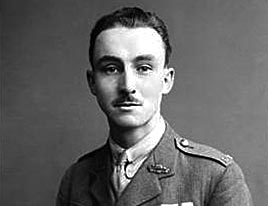Canada Remembers Times - 2014 Edition - Page 1
The Great War, 100 Years Later
Canadian troops returning from the trenches.
(Photo: CWM - George Metcalf Archival Collection)
This year marks 100 years since the beginning of the First World War, a conflict that changed the course of history. Its repercussions still echo today as centuries-old empires were swept away, map borders were redrawn, and society was rocked by the bloodiest war ever seen to that time.
The First World War erupted on August 4, 1914. Britain declared war on Germany and that meant that Canada—then a part of the British Empire—was also at war. Many Canadians greeted the news of war enthusiastically and quickly enlisted so they wouldn’t miss out on what they felt would be a glorious adventure that would be over by Christmas. Tragically, the fighting would drag on for more than four years on grim battlefields swept by deadly machine guns, artillery and poison gas. More than 650,000 Canadians and Newfoundlanders served in the First World War and more than 66,000 lost their lives.
Our soldiers sacrificed greatly, but their courage and hard-won experience earned them a reputation for being some of the best troops on the Western Front. They achieved impressive victories at places like Vimy Ridge and Passchendaele and in the series of battles at the end of the war that came to be known as “Canada’s Hundred Days.”
A number of First World War centennial commemorative events will be taking place in Canada and overseas between 2014 and 2018. How will you remember?
A Century of Service
PPCLI badge.
(Photo: DND)
Two of Canada’s best-known army regiments are marking 100th anniversaries this year. When the First World War erupted in 1914, our military had to grow quickly and new units were created.
Andrew Hamilton Gault, a Montréal businessman and South African War Veteran, offered to personally fund the creation of a new regiment in August 1914. Princess Patricia’s Canadian Light Infantry was named in honour of the then-Governor General’s daughter. Applications quickly flooded in and almost all of the first 1,100 men who were accepted for service had previous military experience. It would be the first Canadian fighting unit to reach the Western Front and its soldiers saw heavy action throughout the conflict.
Royal 22e Régiment badge.
(Photo: DND)
At the time of the outbreak of the war, our army was dominated by Anglophones. Pressure soon rose for French Canadians to have a regiment of their own. Quebec doctor and businessman Arthur Mignault offered to fund its formation and in October 1914, the 22nd (French Canadian) Infantry Battalion was created.
Almost 6,000 men would serve in this unit during the conflict. Soon after the war, it would be honoured by being renamed the Royal 22e Régiment.
The First World War would only be the beginning of the outstanding service that the “Patricias” and the “Van Doos” would offer in our country’s wars and peace support efforts over the past 100 years.
Military Service and the House of Commons
There are many ways to serve your country. For some people, one way is not enough! Amazingly, since Confederation, more than 750 Members of Parliament have also served in the Canadian military—almost one fifth of all federal politicians over the years. Here are some of these dedicated citizens.
George Baker
George Baker.
(Photo: Veterans Affairs Canada)
Born in Quebec in 1877, Baker was elected to the House of Commons in 1911. When the First World War broke out, the lawyer was Member of Parliament for the riding of Brome. He enlisted in May 1915 and served on the front lines with the 5th Canadian Mounted Rifles. He was killed in action at Ypres, Belgium, in June 1916. Baker was the only parliamentarian to die in action in the war. A bronze statue of him is on display in the foyer of the House of Commons.
Milton Gregg
Milton Gregg.
(Photo: Department of National Defense)
Gregg was born in New Brunswick in 1892. He was a student when he enlisted in Halifax in 1914 during the First World War. He was wounded several times and decorated with the Military Cross and the Victoria Cross. Gregg would serve again in the Second World War and later be elected as Member of Parliament for the riding of York–Sunbury. The University of New Brunswick named the Gregg Centre for the Study of War and Society in his honour.
A Bold and Brave Aboriginal-Canadian Soldier
Distinguished Conduct Medal.
(Photo: Veterans Affairs Canada)
George McLean was born in Kamloops, British Columbia, in 1875. A rancher from the Head of the Lake Band in the Okanagan district, McLean served with the Canadian Mounted Rifles in the South African War.
McLean enlisted again during the First World War at the age of 41. In the Battle of Vimy Ridge in April 1917, he launched a daring attack and single-handedly captured 19 German soldiers. For this brave action, Private McLean earned the Distinguished Conduct Medal, the second-highest award for gallantry in the war.
That same day, he was shot in the arm by a sniper and was sent back to Canada to heal. His courageous service continued in a new way as he would become a fireman in the Vancouver area. George McLean passed away in 1934.
- Date modified:
